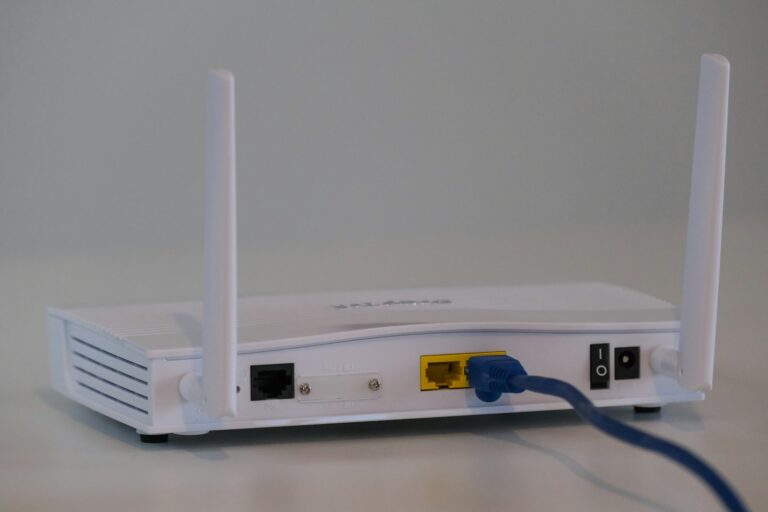MikroTik API with Python: Building Custom Network Management Tools
In today’s dynamic networking environment, automating network tasks is no longer a luxury but a necessity. This article explores how to leverage the MikroTik API with Python to create custom network management tools that minimize manual errors and streamline repetitive configuration tasks. Whether you are a network engineer or a systems administrator, this guide will walk you through the process, share real-life examples, and provide useful resources to get you started.
Table of Contents
- 1. Introduction
- 2. Understanding the MikroTik API
- 3. Setting Up Your Python Environment for MikroTik Automation
- 4. Connecting to the MikroTik API Using Python
- 5. Building Custom Network Management Tools
- 6. Automation Best Practices and Advanced Techniques
- 7. Real-World Use Cases and Success Stories
- 8. Troubleshooting and Community Resources
- 9. Conclusion
- 10. Appendix and Additional Resources
1. Introduction
Network automation is rapidly transforming the way enterprise networks are managed. By reducing repetitive manual tasks, automation not only minimizes configuration errors but also frees up valuable time for network engineers and systems administrators to focus on more strategic projects.
This article will explore how to use the MikroTik API in conjunction with Python to build custom network management tools. Our discussion is geared toward professionals who manage large-scale enterprise networks, and our examples will focus on real-life scenarios where automation proves to be indispensable.
- Automation Benefits:
- Reduces human error
- Eliminates repetitive tasks
- Ensures consistent configuration across devices
- Enhances overall network security
- Target Audience: Network engineers and systems administrators
- Key Technologies: MikroTik RouterOS, MikroTik API, Python
For a visual introduction to network automation with MikroTik and Python, check out this informative video on YouTube:
Network Automation using Python on MikroTik (REST API Part 1)
2. Understanding the MikroTik API
The MikroTik API is a powerful tool that allows you to interact programmatically with MikroTik RouterOS devices. It offers a structured way to perform configuration changes, monitor network performance, and automate various tasks.
- What is the MikroTik API?
- A set of commands and protocols that enables remote configuration and monitoring of MikroTik devices
- Supports real-time data exchange with network devices
- Facilitates the automation of tasks that would otherwise require manual intervention
- Key Benefits for Network Automation:
- Real-Time Configuration: Make immediate changes to your network infrastructure
- Error Reduction: Consistent configuration minimizes human errors
- Scalability: Manage multiple devices across large-scale enterprise networks effortlessly
- Common Use Cases:
- Automated configuration backups
- Real-time monitoring and alerting
- Remote troubleshooting and diagnostics
- Automated deployment of security policies
3. Setting Up Your Python Environment for MikroTik Automation
Before diving into the code, it’s essential to set up your Python development environment properly. This ensures that you have all the necessary tools and libraries to interact with the MikroTik API effectively.
- Prerequisites:
- Python 3.6 or higher
- Basic understanding of Python programming
- Access to one or more MikroTik RouterOS devices (physical or virtual)
- Recommended Libraries:
librouteros: A Python library for connecting to the MikroTik APIrequests: Useful for interacting with the MikroTik REST APIparamiko: For SSH-based automation when needed
- Installation:
- Install
librouterosusing pip:pip install librouteros - Install
requests:pip install requests - Install
paramiko:pip install paramiko
- Install
- Development Environment Setup:
- Choose an IDE or code editor that supports Python (e.g., VS Code, PyCharm, Sublime Text)
- Configure your IDE for syntax highlighting, linting, and debugging
- Set up version control with Git to manage your automation scripts
4. Connecting to the MikroTik API Using Python
In this section, we will demonstrate how to establish a connection to a MikroTik device using Python. We will cover both the traditional API method using the librouteros library and an SSH-based method using paramiko.
4.1 Using the librouteros Library
- Step-by-Step Guide:
- Import the necessary modules
- Establish a connection with the MikroTik device
- Retrieve network configuration data
Below is a sample script demonstrating how to connect using librouteros:
from librouteros import connect
import json
# Replace with your MikroTik device credentials
router_ip = "192.168.1.1"
username = "admin"
password = "your_password"
try:
# Establish connection
api = connect(
host=router_ip,
username=username,
password=password
)
# Retrieve IP address configuration
ip_info = api(cmd="/ip/address/print")
print(json.dumps(ip_info, indent=2))
except Exception as e:
print("Connection failed:", e)
- Error Handling:
- Use try-except blocks to catch connection errors
- Log errors to a file for later review
4.2 Using SSH with paramiko
- Why SSH?
- SSH provides a familiar CLI-based interface
- Useful for quick one-off configuration changes
- Sample Script:
- Connect using SSH and execute commands
- Retrieve and display output from the MikroTik device
import paramiko
from getpass import getpass
router_ip = "192.168.1.1"
username = "admin"
password = getpass("Enter your MikroTik password: ")
try:
# Create an SSH client instance
ssh = paramiko.SSHClient()
ssh.set_missing_host_key_policy(paramiko.AutoAddPolicy())
ssh.connect(router_ip, username=username, password=password)
# Execute a command to print IP addresses
stdin, stdout, stderr = ssh.exec_command("ip address print")
print(stdout.read().decode())
ssh.close()
except Exception as e:
print("SSH connection failed:", e)
For a detailed walkthrough, you can watch this YouTube tutorial on using Paramiko for network automation:
Network Automation using Python (Paramiko Module) on MikroTik
5. Building Custom Network Management Tools
Once you have established a connection to your MikroTik devices, the next step is to build custom tools that help manage your network. These tools can automate routine tasks, monitor device health, and even respond to network events in real-time.
- Design Considerations:
- Plan the architecture of your tool to be modular and scalable
- Consider a layered design: connection layer, business logic, and presentation/UI
- Think about integration with existing network management systems
- Core Functionalities to Include:
- Device inventory management: Automatically fetch and display device configurations
- Real-time network monitoring: Poll devices and generate alerts when anomalies are detected
- Configuration backups: Periodically backup device configurations for disaster recovery
- Automated configuration changes: Deploy updates across multiple devices simultaneously
Here is a simple example of how you might structure your tool using functions to perform different tasks:
def get_device_inventory(api):
"""Fetch and return device inventory."""
return api(cmd="/system/resource/print")
def backup_configuration(api):
"""Backup the current device configuration."""
config = api(cmd="/export")
with open("mikrotik_backup.txt", "w") as f:
f.write(config)
print("Backup complete.")
def update_firewall_rules(api, rule):
"""Update firewall rules on the device."""
# Example: add a new firewall rule
response = api(cmd="/ip/firewall/filter/add", **rule)
return response
# Example usage:
if __name__ == "__main__":
# Assume 'api' is already connected using librouteros
inventory = get_device_inventory(api)
print("Device Inventory:", inventory)
backup_configuration(api)
new_rule = {"chain": "forward", "action": "drop", "src-address": "192.168.1.100"}
update_firewall_rules(api, new_rule)
For further inspiration, check out this Medium article discussing favorite MikroTik RouterOS API automation tools:
My Favourite MikroTik RouterOS API Automation Tool
6. Automation Best Practices and Advanced Techniques
As you scale your network automation efforts, it becomes crucial to adopt best practices and advanced techniques that ensure your tools are secure, efficient, and reliable.
- Scheduling and Orchestration:
- Use cron jobs or scheduling libraries like
APSchedulerto automate periodic tasks - Integrate with orchestration tools such as Ansible or Terraform for multi-device deployments
- Use cron jobs or scheduling libraries like
- Security Considerations:
- Secure API credentials and store them securely using environment variables or vault services
- Implement role-based access controls to limit who can execute automation scripts
- Always use encrypted connections (SSH or HTTPS) when communicating with network devices
- Performance Optimization:
- Cache frequently requested data to reduce API calls
- Implement asynchronous processing where possible to handle multiple devices concurrently
- Monitor your automation scripts for performance bottlenecks
For advanced orchestration concepts, watch this playlist on YouTube:
Network Automation – YouTube Playlist
7. Real-world use Cases and Success Stories
Automation is not just a theoretical exercise—it has real-world applications that can significantly improve network reliability and efficiency.
- Case Study: Automated Configuration Backup
- A large enterprise network implemented an automation tool that regularly backed up configurations from over 500 MikroTik devices.
- This approach reduced manual backup time from days to minutes and provided a quick recovery path during outages.
- Case Study: Security Enhancements
- By automating routine security checks and configuration updates, a service provider reduces the risk of misconfigurations that could lead to vulnerabilities.
- For example, automated scripts regularly updated firewall rules and disabled unused services based on predefined security policies.
- Real-World Example: L2TP Password Automation
- A network team used Python scripts to automatically update L2TP passwords across their MikroTik routers, ensuring that outdated credentials were promptly rotated. This reduced the risk of unauthorized access.
- Discussions on MikroTik forums and Reddit (see MikroTik Forum Discussion highlight similar success stories.
These examples illustrate the tangible benefits of network automation and provide a roadmap for implementing similar solutions in your environment.
8. Troubleshooting and Community Resources
Even the best automation tools can run into issues. Below are some common problems you might face and resources to help troubleshoot them.
- Common Issues:
- Connection timeouts or authentication failures – ensure your credentials and network configurations are correct.
- API command syntax errors – refer to the official MikroTik API documentation for command structure.
- Inconsistent responses – use logging to capture API responses and analyze errors in detail.
- Useful Resources:
Additionally, community forums and online groups provide real-time support and discussions about best practices, troubleshooting tips, and new automation tools.
9. Conclusion
Automation using the MikroTik API with Python can revolutionize the way you manage your network. By reducing manual intervention, you can minimize configuration errors, ensure consistency, and free up valuable resources to focus on more strategic initiatives.
In this article, we have:
- Explored the benefits of network automation
- Provided step-by-step guides to setting up your Python environment
- Demonstrated how to connect to and interact with the MikroTik API
- Outlined strategies for building custom network management tools
- Shared real-world use cases and troubleshooting tips
With the resources and examples provided, you are now well-equipped to start automating your MikroTik network configurations and take advantage of the many benefits that automation offers.
Call to Action: Try building a simple automation script today and share your experience in the comments. Join the community of network professionals who are making smart use of technology to drive efficiency and innovation.
10. Appendix and Additional Resources
For further reading and advanced examples, refer to the following resources:
- MikroTik Scripting Guide
- MikroTik API Manual
- MikroTik API with Python3
- Network Automation on MikroTik using Python (Udemy Course)
- Network Automation using Python on MikroTik (REST API Part 2)
Glossary:
- API (Application Programming Interface): A set of routines, protocols, and tools for building software and applications.
- RouterOS: The operating system used by MikroTik routers.
- SSH (Secure Shell): A network protocol that provides administrators with a secure way to access a remote computer.
- REST API: An API that uses HTTP requests to GET, PUT, POST, and DELETE data.
By leveraging these resources, you can further enhance your understanding and capabilities in network automation. The journey to smarter, error-free network management starts with taking the first step—start automating today!






